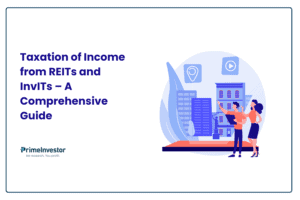Retail investors often believe that high net worth investors (HNIs) have access to some secret sauce to making money. This is probably why there is so much interest in SIFs (Specialized Investment Funds). This is a new category of investment products which SEBI has approved.

SIFs will be allowed to pursue riskier strategies than MFs, but with a Rs 10 lakh minimum investment. Currently, investors looking to break away from MFs, need to either shell out Rs 50 lakh to access Portfolio Management Schemes (PMS) or Rs 1 crore to buy into Alternative Investment Funds (AIF).
As SIFs will take retail money and yet follow riskier strategies, SEBI has said that only entities with a mutual fund license can launch them. They will have a regulatory framework similar to MFs, which SEBI rolled out in February 2025.
At least four AMCs have already launched their SIF platforms. Edelweiss AMC will launch its SIFs under the Altiva brand, Mirae under the Platinum brand, SBI under the Magnum banner and ITI under Diviniti. The first set of product filings is with SEBI and are expected to hit the market soon. Many AIF and PMS managers are also said to be eyeing MF licenses so that they can launch SIFs.
So, what can SIFs do that MFs can’t? Will they deliver better returns than MFs? We try to answer this here.
Different features
Before we get to their investing strategies, it is important to understand the features of SIFs will differ from MFs. Here are 6 points of difference.
- Track record: Only a mutual fund house with a minimum operating record of 3 years with average AUM (assets under management) of Rs 10,000 crore in three preceding years, can launch SIFs. AMCs which don’t meet these criteria can however launch a SIF by hiring a CIO with 10 years’ experience managing a Rs 5000 crore AUM and a fund manager with 3 years’ experience managing Rs 500 crore.
- Different brand: SEBI has asked AMCs to keep their SIF platform distinct from their MF business by having a separate brand name, with a new website or web page. Therefore, SIFs are likely to be described by a new brand name “brought to you by” so-and-so AMC.
- Strategies versus schemes: Mutual funds operate “schemes”, but SIFs will offer you a menu of “strategies”.
- Different categories: MFs are bucketed into 36 categories but SEBI has sanctioned only 7 categories of SIFs. These are:
- Equity oriented: Equity Long-Short Fund, Equity ex-top 100 Long-Short Fund and Sector rotation Long-Short Fund
- Debt-oriented: Debt Long-Short Fund, Sectoral Long-Short Fund
- Hybrid: Active asset allocator Long-Short Fund, Hybrid Long-Short Fund
A SIF platform can have only one product per category.
- Intermittent liquidity: Most MF schemes are open-ended. So, you can buy or sell units at any time. But SIFs can launch strategies which are interval or close-ended. In interval products, redemptions and purchases may be allowed daily, weekly, monthly, fortnightly, quarterly, annually or even on a fixed maturity basis. The purchase and redemption frequencies of a SIF strategy can be different from each other. However, intermittent redemption is only allowed in debt and hybrid SIFs while equity SIFs need to offer daily redemption.
- Less disclosure: SIFs will calculate daily NAVs, But they can disclose their portfolios once in every two months. This is unlike MFs which are required to make monthly portfolio disclosures.
Similarities
MFs and SIFs also have a few similarities.
# 1 Same fund managers: SIFs and MFs may be managed by the same teams within an AMC.
# 2 Same TER caps: SIFs are subject to the same expense limits decided by SEBI, as MFs. They are subject to the MF slab-wise structure on Total Expense Ratio.
# 3 Same taxation: SIFs will have identical taxation to MFs. All transactions made by a SIF will enjoy pass-through status and buys or sells of securities are not taxed in the fund’s hands. Capital gains or losses on redemption and dividend payouts are taxed in the investor’s hands instead. The rates of tax will be the same as MFs.
What’s new about SIFs
The key feature of SIFs that investors may be interested in though, is what they can do with their portfolios that MFs can’t. While they will be investing in the same asset classes as MFs, SEBI has allowed SIFs to take higher portfolio risks than MFs, on two counts.
Higher bond concentration
Debt-oriented and hybrid SIFs can take more concentrated exposure to bonds than MFs. SIFs will be allowed to have 20% of their debt portfolios invested in a single issuer with AAA rating. For AA and A rated issuers, the weight is capped at 16% and 12%. The AMC can also raise these weights by a further 5% with Trustee and Board approval.
Debt MFs cannot have more than 10% of their NAV in a single AAA issuer, with the caps falling to 8% and 6% in AA and A rated issuers. SIFs single sector exposure in debt is also capped at 25%.
In the Indian bond market, diversification doesn’t always pay. Finding 5 or 6 high-yielding but still credit-worthy issuers is easier than building a portfolio of 10 or more issuers with high yield and low default risk. Therefore, the higher concentration may allow debt and hybrid SIFs to earn higher returns by taking fewer credit calls. Such concentration will however come with liquidity risks, as corporate bonds rated below AAA can have patchy liquidity in India. SIFs will probably manage this by structuring such debt funds as interval funds with intermittent redemptions.
Given that the bulk of bond issuances come from the NBFC sector, the sector exposure limit can pose a challenge to SIFs and force them to restrict fund sizes.
While SIFs have been allowed concentrated exposure in debt, in equities they will be subject to the same 10% single-company limit as MFs.
Naked derivative positions
MFs are allowed to own positions in stock or index futures or options only with the objective of hedging or arbitraging. They are not allowed to go short on stocks or indices without owning them first.
However, SIFs will be allowed to own futures and options without owning the underlying stock or index. This will allow SIFs to take naked short positions in stocks or indices. Such exposure should however be capped at 25% of the NAV and cannot exceed it. SIFs will not be allowed to take any exposures beyond 100% of their NAV. SIFs cannot leverage their portfolio to amplify their bets, as AIFs are allowed to do.
SEBI has allowed the following 7 SIF strategies, using Long-Short positions to start with.
How Long-Short strategies work
One of the disadvantages of investing in mutual funds is that they deliver good results only when the markets in which they invest are soaring. So, equity funds deliver returns when there’s a bull market in stocks and debt funds do their best when rates are falling. But we all know that both stock and bond markets do not rise in a linear fashion. They spend a good deal on their falling or in two-way moves.
Long-Short strategies are intended to allow the investment to make positive returns irrespective of market movements. When a fund has equal long and short (buy and sell) positions, it can be theoretically immune to market direction. Fund managers can use long-short strategies in the following ways.
- They may own a portfolio of stocks/bonds/indices and use short positions in the same securities to hedge against losses or contain downside when they perceive valuations to be stretched.
- They may use equal long and short positions to deliver a market-neutral portfolio. That is, the portfolio is designed to deliver positive returns irrespective of market direction – which is tough to predict. These are the absolute return strategies popular with hedge funds.
- They may hold both long and short positions but change their relative proportions to have a net-long or net-short positioning, depending on which way they expect markets to move.
- They may use long and short positions to capture the relative performance of different stocks within a sector or different sectors in the market. For example, if a fund thinks TCS is expensively valued versus Infosys it may have a long position in Infosys and short in TCS, gaining from both legs of the trade. A fund may own long positions in insurers but short private banks, if it expects market interest to switch from the latter to former.
While the leeway to own short positions has clear advantages, evident from the above, there are also disadvantages. The fund manager of a long-short fund has to make a larger number of active calls (whether to have shorts, how much to have, which stocks to short etc) and get them right to deliver performance. A long-short fund can also be tough to benchmark against peers or an index due to its fluid portfolio. As mutual funds are not allowed to own naked short positions, most AMCs do not have a track record in successfully executing these strategies.
A few AMCs however, do run AIFs which have been using long-short strategies for the last 5-6 years. The track record of the leading Long-Short AIFs, captured in the table below, shows you how their returns can vary widely from each other.
Conclusion
With no schemes launched yet, it’s too early to judge SIFs against mutual funds. Their success will hinge on how effectively fund managers use the additional flexibility SEBI has provided.
The key advantage: SIFs can take concentrated debt positions and employ naked short selling – strategies unavailable to mutual funds. However, these same features make SIFs inherently riskier, as concentrated positions amplify both gains and losses, while long-short strategies require more complex market calls.
Reality check: The wide performance dispersion among existing long-short AIFs suggests these strategies are highly manager-dependent, with no guarantee of success.
Bottomline: Access to derivatives and short selling need not automatically translate to superior performance of SIFs over mutual funds. The varied track record of existing long-short AIFs underscores that success depends heavily on manager expertise in executing complex strategies. Given this skill dependency, SIFs more than mutual funds, would need to establish a proven performance history before capital can be committed. One cannot be swayed by their expanded investment toolkit alone.





16 thoughts on “What can the new Specialised investment funds (SIFs) do that MFs can’t? ”
Dear Aarati, do we have an update on SIF now that portfolios and recent returns are published. Please advise.
Have seen a few, not all products. Feel SIFs are taking on unnecessary complexity to deliver debt like returns.
I’ve a feeling that corporates, large family offices and HNIs will use SIF more extensively than the normal retail investors simply because of the tax advantage that it brings over PMS.
looking at the websites designed for SIF, it appears that even AMCs want to target those clients with deep pockets.
Yes very likely. Product design is not very retail friendly
What is the tax treatment of the SIFs? Like MFs or like PMSes?
Same as MFs
Excluding non-listed companies pretty sure neuters it. Then there’s SEBI being SEBI again – “Different brand” but “SIFs and MFs may be managed by the same teams within an AMC”. Just absurd.
If there really is no limit in international exposure (i.e those current RBI USD billion limits that has entire MF industry in its tracks for international investment) and there’s no % limit on international exposure either then that could be one reason to consider these.
Otherwise these will just become shiny new vehicles for fund houses to pump out more schemes.
Agree. Except for adding Long Short to existing categories don’t see much innovation here right now. But it is up to the AMCs to come up with new products.
Aarati Maam, Thank you for this article… excellent as usual. There are couple of points I want to understand.. SEBI recently put brakes on excessive retail participation on F&O … The SIF route seem to be another way to open that route back… the assumption is fund manage is more knowledgeable with lot of resources to not make same mistakes that retail folks do…. but as you pointed out we have not seen the skills of any existing fund manager in derivatives and AIF clearly shows compared to MF the returns are not great… so what is SEBI’s idea to open up SIF product?
Also it looks like SIF will increase participants in derivative market (via retail money) and there are many players like Jane Street who are accused of market manipulation to make substaintial profit… so can experienced fund managers avoid getting duped by such participants compared to retail folks?
Lastly do you think large flows into SIF can make markets volatile to affect mutual fund returns?
Thank you! The main way in which derivatives will be used in SIFs is to hold short positions complementing long positions in the portfolio. Therefore the risk of losing money is less than in cases where investors are trading only derivatives. In long- short SIFs hopefully, funds will be using derivatives to hedge against long holdings or to take negative views on stocks or sectors that are overvalued or have negative prospects. It is true though that we are yet to see hoe MFs fare even in such calls.
Would SIFs be Mcap agnostic?
Can they also invest in unlisted space and International equities?
Yes they can invest across mcaps and international stocks but not unlisted securities.
Thanks for article, I have two questions,
1. How much exposure exlosure are allowed in SIF,
2. Is there any limit like MF for international investing or impacted by existing limit
Don’t understand your first question. The minimum investment is Rs 10 lakh. There is no limit on international exposures.
A well balanced article. I was looking forward to this new asset class wanted to know how is it different from the MFs.
The conclusion para sums it up well.
Thank you